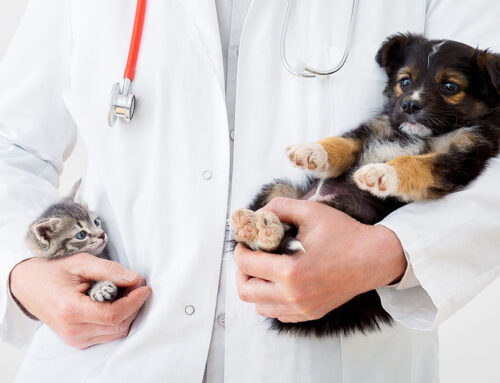There’s nothing more exciting than bringing home a new pet. It’s a big responsibility and lots of preparation is needed, including buying the appropriate toys, food, bed, leashes, and grooming supplies. In all of the excitement, however, remember to prepare for your pet’s long-term health needs. Pet insurance can help ensure your pet receives the veterinary care they need when something unexpected—and unbudgeted—happens. Our team at Veterinary Medical Center of Indian River County explains why for many pet owners, pet insurance is not just a luxury but a necessity.
Veterinary costs are rising
Veterinary medicine has made incredible advances in recent years. From chemotherapy to advanced surgery, today’s pets can receive treatments that were once only available for humans. However, these advancements come at a cost, in part due to the specialized equipment and skills required. Emergency care can be especially expensive, and a pet’s unexpected accident or illness can cost thousands of dollars. Pet insurance can help ensure your pet receives the high-quality care they need without draining your savings.
Pet insurance provides peace of mind
Your pet is a part of the family, and keeping them healthy is a top priority. By choosing a comprehensive insurance plan that covers accidents, illnesses, and wellness care, you can enjoy the peace of mind that comes with knowing your pet is covered, no matter what comes their way.
How pet insurance works
If you have insurance and your pet is treated for a condition covered under their policy, you can submit a claim for reimbursement for the services. However, most pet insurance plans have a 14-day waiting period before you can file a claim, and conditions that arise during that period likely won’t be covered. For covered services, pet insurance companies offer one of two claims payment methods.
- Direct pay — The pet insurance company makes payments directly to the veterinarian, so you do not have to pay out of pocket or file a reimbursement claim.
- Reimbursement — Policyholders pay their veterinarian in full and submit a reimbursement claim to the insurance company, which processes the claim and transfers the reimbursement to the policyholder via direct deposit or check.
What pet insurance covers
You can customize your pet’s insurance coverage based on your budget and their health care needs. Before you select a policy, research each coverage option carefully to determine the one that is best for your pet and your wallet. Most pet insurance companies offer the following coverage options:
- Accident-only coverage — Covers accidental injuries (e.g., broken bones, foreign-object ingestion) and other medical conditions.
- Illness and accident coverage — Usually covers diagnosis and treatment costs for conditions such as cancer, endocrine disorders, and some orthopedic injuries.
- Wellness coverage riders — Can be added to most accident and illness plans, and may cover preventive services, such as:
- Annual wellness exams
- Vaccinations
- Routine blood work
- Spay and neuter procedures
- Dental cleanings
- Flea, tick, and heartworm prevention and testing
What pet insurance does not cover
Coverage varies by policy and provider. However, most pet health insurance providers will not cover pre-existing conditions or hereditary conditions, such as hip dysplasia. If they do cover these conditions, the companies will require a waiting period that can range from 48 hours to weeks or months depending on the condition, during which time no reimbursement claims can be made.
The cost of pet insurance

The cost varies by the company and by the following factors:
- Age — Younger pets are generally healthier and will have lower monthly rates than older pets, who are more prone to ailments.
- Breed — Some breeds have a genetic predisposition for certain conditions, which can increase the monthly cost.
- Species — A dog typically costs more to insure than a cat.
- Coverage — The coverage amount you choose affects your monthly premium. Accident-only coverage tends to be the most inexpensive option, while a comprehensive policy that covers expenses for accidents, illnesses, and routine veterinary visits tends to be more costly.
- Deductible — Pet insurance deductible rates are similar to rates for people. When you agree to pay a higher deductible, you pay a lower monthly premium, and when you pay a lower deductible, you pay a higher monthly premium.
While the best time to purchase pet insurance is when your pet is young and healthy—most pet insurance companies cover pets as young as 8 weeks of age—pets of all ages can benefit from the coverage insurance provides. Contact our Veterinary Medical Center of Indian River County team with any pet insurance questions or to schedule your pet’s next appointment.







Leave A Comment